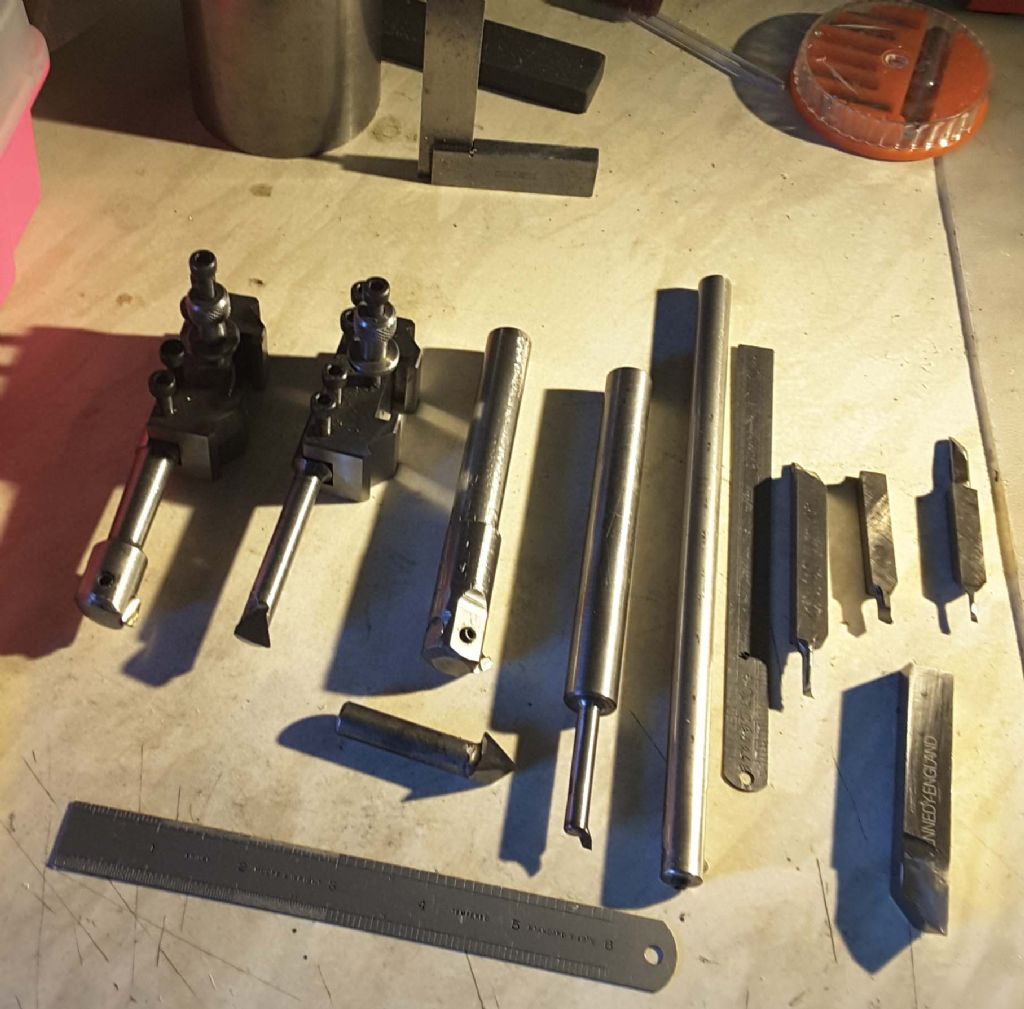Posted by Andrew Johnston on 19/11/2019 10:45:11:
Posted by Michael Gilligan on 19/11/2019 09:47:06:
I would be grateful if you could explain that, Dave [my emboldening]
I think SoD is getting confused with units. Power per unit volume removed would be a better metric. Intuitively I'd think that negative rake would consume more power per unit volume, but I'm not sure without looking it up. However, it makes sense that less power per unit volume is used as cutting speed increases. That's due to increased heat in the cutting zone, so the metal is hotter, and softer, and shears with less force.
Andrew
Yes, Andrew explains it better. My use of the word 'force' was in the ordinaru lay sense, not scientific. I do mean 'Power per unit volume removed '
Here's how I think it works. A sharp tool cuts with less pressure than a blunt one, but – counter-intuitively – sharp isn't necessarily the most efficient way of removing metal. Other factors can come into play.
First, Carbide tool tips can run at much higher temperatures than HSS, and less energy is needed to remove heat softened metal.
Secondly, I understand carbide also allows a different cutting mode. Rather than having a sharp edge actually in contact with the metal (as when a knife cuts butter), a carbide cutter can be forced in hard enough to wedge metal off such that the edge isn't in contact at all. The benefit is most of the unwanted heat is carried away with the chips, allowing carbide to be used even more aggressively without itself overheating.
Despite hefty performance advantages carbide isn't universally wonderful. It's more brittle than HSS which means the cutting part needs all the mechanical support it can get. Hence the preference for negative rake carbide, because more material supports the edge compared with a positive geometry.
Ought to emphasise that the power-saving advantages of carbide really only benefit industrial users. Production is most efficient when machines are run continually at full power, minimising stops with automatic tool-changers, work-holding and swarf clearance etc. Is this environment, it's highly likely that inserts and cutting parameters will be carefully selected for optimum performance, not bought from ebay! The tide is strongly against master-craftsmen carefully sharpening HSS cutters!
However, 'optimum performance' in a production sense is rarely needed in a home workshop, or even in professional environments doing development or low-volume work. There's still plenty of room for HSS tooling.
Dave
 Neil Wyatt.
Neil Wyatt.




